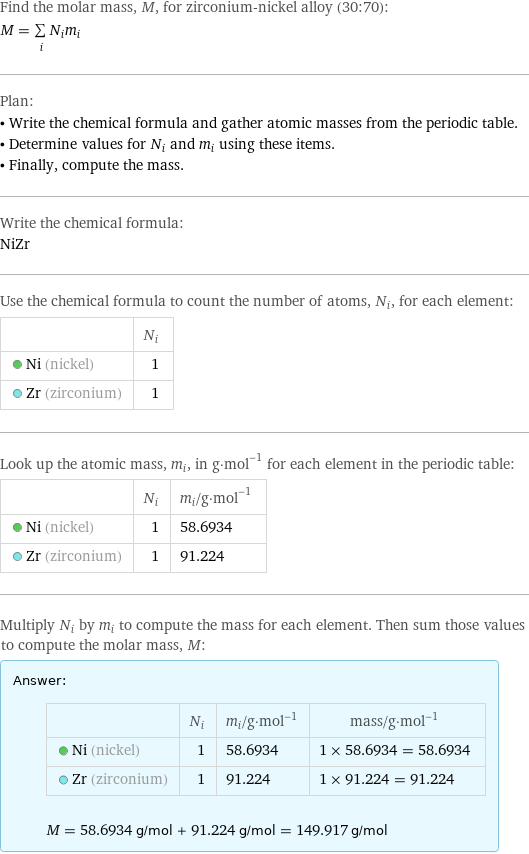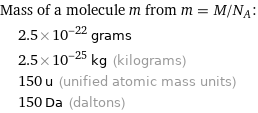Input interpretation

zirconium-nickel alloy (30:70) | molar mass
Result

Find the molar mass, M, for zirconium-nickel alloy (30:70): M = sum _iN_im_i Plan: • Write the chemical formula and gather atomic masses from the periodic table. • Determine values for N_i and m_i using these items. • Finally, compute the mass. Write the chemical formula: NiZr Use the chemical formula to count the number of atoms, N_i, for each element: | N_i Ni (nickel) | 1 Zr (zirconium) | 1 Look up the atomic mass, m_i, in g·mol^(-1) for each element in the periodic table: | N_i | m_i/g·mol^(-1) Ni (nickel) | 1 | 58.6934 Zr (zirconium) | 1 | 91.224 Multiply N_i by m_i to compute the mass for each element. Then sum those values to compute the molar mass, M: Answer: | | | N_i | m_i/g·mol^(-1) | mass/g·mol^(-1) Ni (nickel) | 1 | 58.6934 | 1 × 58.6934 = 58.6934 Zr (zirconium) | 1 | 91.224 | 1 × 91.224 = 91.224 M = 58.6934 g/mol + 91.224 g/mol = 149.917 g/mol
Unit conversion

0.14992 kg/mol (kilograms per mole)
Comparisons

≈ ( 0.21 ≈ 1/5 ) × molar mass of fullerene ( ≈ 721 g/mol )

≈ 0.77 × molar mass of caffeine ( ≈ 194 g/mol )

≈ 2.6 × molar mass of sodium chloride ( ≈ 58 g/mol )
Corresponding quantities

Mass of a molecule m from m = M/N_A: | 2.5×10^-22 grams | 2.5×10^-25 kg (kilograms) | 150 u (unified atomic mass units) | 150 Da (daltons)

Relative molecular mass M_r from M_r = M_u/M: | 150